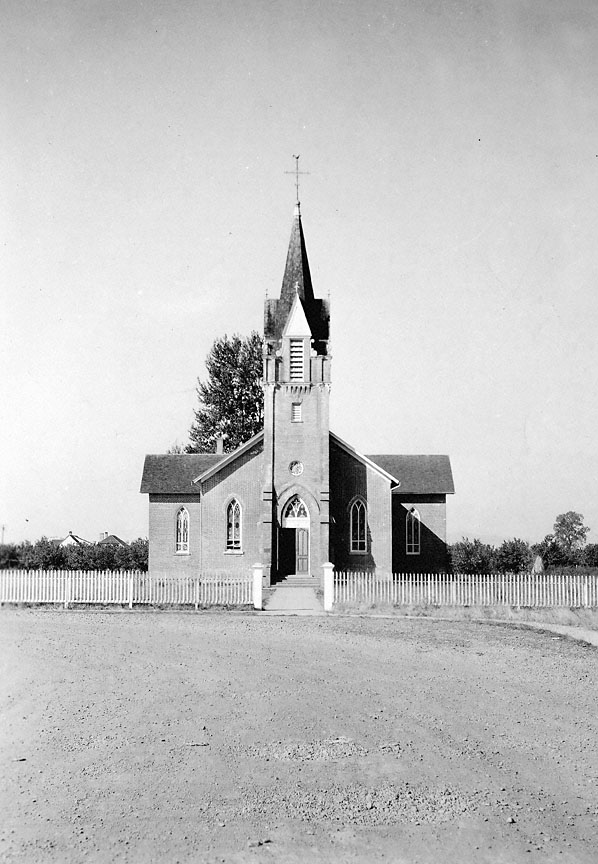- Catalog No. —
- OrHi 67181
- Date —
- August 18,1939
- Era —
- 1921-1949 (Great Depression and World War II)
- Themes —
- Architecture and Historic Preservation, Geography and Places, Religion
- Credits —
- Oregon Historical Society
- Regions —
- Willamette Basin
- Author —
- Federal Writers' Project
St. Paul Catholic Church, Marion County
The small farming community of St. Paul is dominated by the St. Paul Catholic Church. This 1939 photograph was taken a century after the establishment of the parish and nearly ninety-three years after its construction. The photograph was created for the Historic American Buildings Survey (HABS), the first national inventory of the nation’s historic structures.
Former fur trappers of French Canadian heritage and Roman Catholic faith began settling the rich lands of the Willamette Valley in the 1820s. Many married Indian women, and the growing families sent word to eastern Canada of their desire for Catholic priests in the Oregon Country. Sometime in 1836, a hopeful group of settlers in the French Prairie area erected a log church, some 30 feet by 70 feet in size. In 1838, the Revs. François Norbert Blanchet and Modeste Demers set forth from Québec for Fort Vancouver, arriving on November 28. On January 6, 1839, Father Blanchet celebrated the first Catholic mass in Oregon at St. Paul, blessed the log church and dedicated it to St. Paul.
Over the next decade, the church became the nucleus of a religiously-centered farming community that came to include a school for boys, St. Joseph’s College, a convent for the Sisters of Notre Dame du Namur who came from Belgium in 1844, and an academy for women and girls. The log church was replaced by a new one, made of bricks burned at the site, which was dedicated on November 1, 1846. A simple vernacular structure, it was nonetheless imposing, especially in its central bell tower topped by a cross, and its gothic-arched windows. Measuring 100 feet in length and 45 feet wide, the church had two side chapels that gave it a cruciform shape. The bell tower was 84 feet high; it has been rebuilt since its construction, but the original church is still basically intact.
The religious importance of St. Paul waned in the 1860s, when Oregon City became the headquarters of the regional archdiocese, but the parish has been active continuously since its inception. The photograph shows the church nearly a century after its construction, fronted by a wooden picket fence. It is the centerpiece of the St. Paul Historic District, placed on the National Register of Historic Places in 1982.
Further Reading:
McKay, Harvey J. St. Paul, Oregon, 1830-1890. Portland, Oreg., 1980.
Written by Richard Engeman, © Oregon Historical Society, 2005.
